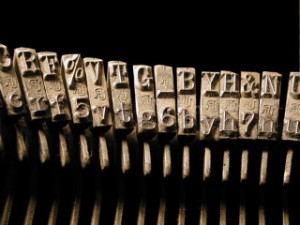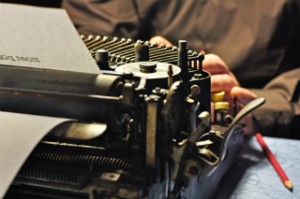I didn’t actually get to “attend” this virtual event in person, as the sessions were mostly while I was at work, but I’m rewatching the highlights on the website and enjoying them.

My favorite sessions so far have been “Take Off Your Pants” (a session urging you to outline at least the main points of your plot) and “Up The Ante” (about adding conflict to your story). Of course, the Jane Friedman session about self-publishing is also quite informative.
Some of the tips we’ve learned so far include the “beats” of your story:
- Opening Scene: we see the character in their ordinary life
- Inciting Event: this changes their entire life with no way back
- Character Realizes External Goal: they know what they want
- Display of Flaw: we see the character’s main flaw that has prevented them from gaining that goal before
- Drive for Goal: character makes an effort to reach their goal
- Antagonist Revealed
- Thwart #1: the antagonist (or something else) gets in the way of the goal
- Revisiting Flaw: we see the flaw keeping the character from the goal
- New Drive for Goal: the character tries even harder
- Antagonist Attacks
- Thwart #2: Another obstacle in the way
- Changed Goal: the character finds a new goal
- Ally Attacks: a friend/mentor points out flaws/challenges character
- Girding the Loins: the character finally recognizes their flaws
- Battle: the character fights the antagonist
- Death: the dark moment where everything looks hopeless
- Outcome: end of the story/wrap-up
And for Conflict. we learned the following:
- Central Conflict: the main engine driving the story; the central question of the book; the major challenge the protagonist must overcome by the end of the story
- Underlying (Chronic) Conflict: an outside conflict thrust onto the character
- Internal Conflict: thoughts/emotions
- Transient Conflict: circumstantial (Act of God)
A scene must either advance the plot or reveal something about the character. You need some sort of conflict in each scene, also, either explicit or internal. Ask yourself, “What’s the worst that could happen here?” — and then make it happen.
Conflict is a necessary part of any story. Without conflict and tension, you’ve got a boring description and no story.
Along with conflict, though, you must have character reaction. If your characters don’t grow and change in response to the conflict, you’ve got another boring story. In order to really hook your readers and keep them rooting for the characters, those characters must react like real people. They must change – even if it is in small ways.
During your story, the characters must reach a point at which they must decide to make that change. This is the Point of No Return. Beyond this point, they can stay the same, go back to their lives as if nothing happened, and “keep on keeping on.”
The Point of No Return is that place in the conflict where the characters cannot react any further without making some sort of change – emotional, spiritual, physical, or mental. And with that change, they cannot “undo” their reaction. They can’t just pretend it never happened and go back to the way they were before.
This is a key part of a good story. Build your conflict to the point where the characters have to make a change, and your readers will follow right along, cheering for the characters. One good way to figure out if your story is progressing properly is to create a number system for your conflict, with 10 being a Point of No Return moment and 1 being no tension at all.
Number your scenes according to the tension and conflict in each one. You should see the numbers increasing until they reach 10. You can certainly have little dips where you slack off on the tension to give your characters a brief rest, but the overall curve should be uphill.
Once the Point of No Return is reached, you should be at or near the action climax of the tale as well – and it’s all downhill from there.
Conflict or tension is a necessary element of storytelling. Without conflict, you don’t have a story.
First, let’s hop over to Merriam-Webster and define our terms:
- Fight, battle, war
- a : competitive or opposing action of incompatibles : antagonistic state or action (as of divergent ideas, interests, or persons)
b : mental struggle resulting from incompatible or opposing needs, drives, wishes, or external or internal demands - the opposition of persons or forces that gives rise to the dramatic action in a drama or fiction
Pay close attention to Definition 2 – conflict can be entirely internal and still provide a ripping yarn.
Here are some tips for providing good conflict in your stories:
- Want vs Need – The conflict between what a character wants and what he really needs makes for good reading. A character with strong wants and desires provides endless opportunities for tension and conflict.
- Between a Rock and a Hard Place – Giving a character a selection of choices might seem like an easy “out.” But what if none of the choices appeals to that character? Having to choose between two or more undesirable outcomes gives a lot of good tension to your scene.
- Size Up the Opposition – Make sure that your character has opposition that is strong enough to create conflict. It’s not going to be a tense scene if the villain is a little old lady in a Hover-Round sitting between the hero and the Big Red Button on the nuclear weapon panel. Likewise, nobody is going to care if the hero must choose between chocolate and vanilla ice cream for dessert. Create worthy opposition, whether the conflict is external or internal.
- Connections – one good place to look for conflict is in the connections a character has, both to other people and to the things and places around him. What ties your hero to that dead-end job? What prevents her from moving to a better location? Create internal tension by tying your character down.
What is the best conflict you’ve ever read in a book or story?
HERE’S a good article about getting your characters into trouble – in other words, upping the tension in your story.
One of the five elements of a good story is conflict.
Conflict is any struggle between people or things in a story. Here are some of the basic types of conflict:
- Man vs Man – the typical hero vs villain setup, with one person striving for one goal and the second person striving for a different one that conflicts with the first
- Man vs Nature – the protagonist struggles with natural forces instead of another person. This could be something dramatic like a storm, or something subtle like the struggle to survive a hostile land
- Man vs Self – this is the protagonist struggling with his or her own desires and temptations, striving to do the right thing in spite of inner darkness
- Man vs Society – the protagonist struggles against his or her society, defying and striving to change the role they have been given
- Man vs Technology – the protagonist struggles with the modern world. This could be a science fiction story with intelligent machines, or a simple struggle with today’s high-tech society
Some writers also include categories such as Man vs God or Man vs Supernatural to this list.
HERE’S a link to a good Writer’s Digest article: 5 Tools for Building Conflict in Your Novel



